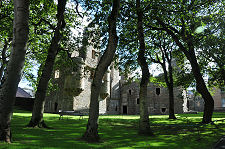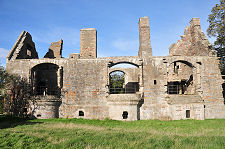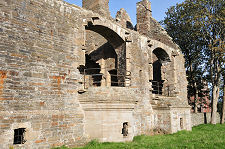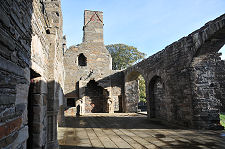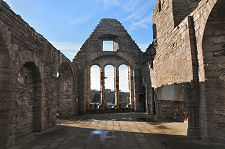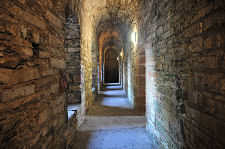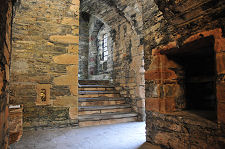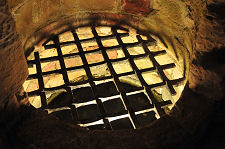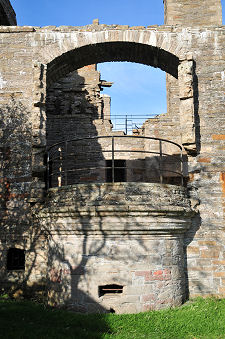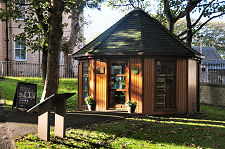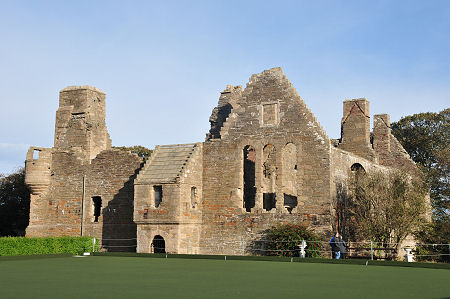 The Earl's Palace from the South-East |
Kirkwall is dominated by the magnificent St Magnus Cathedral. This tends to overshadow two neighbouring buildings that in other settings would be much better known: the Bishop's and Earl's Palaces, which between them chart a large part of Orkney's sometimes turbulent history.
Rounding the corner of St Magnus Cathedral, you are confronted by a large circular tower on the opposite side of the street. This is not as you might think a castle: Kirkwall's castle was destroyed in 1614 and no trace of it now remains. Instead it was a late phase of the Bishop's Palace, the earlier phases of which were built for Bishop William the Old in the 1150s, and known as the Palace of the Yards.
The building was already over a hundred years old when King Håkon IV of Norway took up residence in 1263 following his defeat by Alexander III (and the weather) at the Battle of Largs: see our Historical Timeline. After a period of illness, Håkon IV died here in the early hours of 16 December 1263. Håkon was buried in St Magnus Cathedral until the weather was good enough to take him to his final resting place in Bergen. The full story can be read in The Norwegian Account of Haco's Expedition Against Scotland; 1263.
The palace fell into disrepair in the following centuries before being extensively rebuilt by Bishop Robert Reid (the founder of Edinburgh University) in the 1540s. It was Reid who added the round tower that is today the most striking feature of the Bishop's Palace. In 1568 the palace was acquired by Earl Robert Stewart, whose family then effectively enslaved the islands for over 40 years. (Continues below images...)
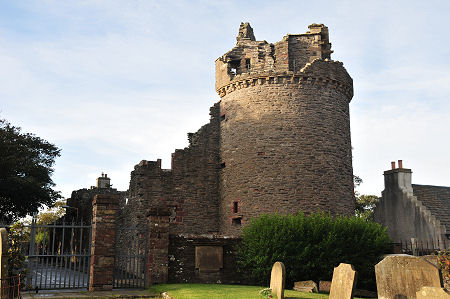 The Bishop's Palace |
 The South Front of the Earl's Palace |
Robert's son Patrick further remodelled the Bishop's Palace in 1600, before deciding the potential of the building had been exhausted. He therefore acquired neighbouring land (in a process involving the trial and execution of the previous owner on trumped up charges of theft) and in 1607 used slave labour to build the Earl's Palace.
Today the Earl's Palace hides away behind a thick screen of trees, but it is generally agreed to have been the finest Renaissance building in Scotland. Earl Patrick Stewart did not enjoy it for long. He was tried for his misdeeds in 1610 and imprisoned in Dumbarton Castle.
Patrick was still in prison when his son Robert rose in revolt in 1614 and seized the Earl's Palace, the Cathedral and nearby Kirkwall Castle. It took an army and a siege (during which the castle was destroyed and the Cathedral was threatened) to displace him, and both Robert and Patrick were later executed.
It is an oft-quoted comment on Patrick's ignorance that his execution had to be delayed to give him time to learn the Lord's Prayer. The Earl's Palace remained intermittently in use until the death of Bishop Mackenzie in 1688, after which it gradually deteriorated. Both palaces are now in the care of Historic Environment Scotland.
For today's visitor any tour begins at the Historic Environment Scotland kiosk in the grounds of the Earl's Palace. Much of the ground floor of the Earl's Palace remains intact, and although the upper floors are roofless, their grandeur can still be appreciated. Earl Patrick Stewart may have been a tyrant, but he had a remarkable taste in architecture.
At the heart of the Earl's Palace is the great hall, whose huge stone window frames provide testament to the grandeur of the design. These and other first floor windows are beautifully corbelled out from the ground floor walls, leading many to conclude that Patrick used French architects to oversee the work.
The older Bishop's Palace now lies across a road from the Earl's Palace and offers less immediate insight into how it would have looked in use. For many, however, the real joy of the Bishop's Palace lies in the stunning views it gives of St Magnus Cathedral. Seen from within the remains of the great hall the spire of the Cathedral seems to rise from the ruins of the palace.
But the best views are reserved for those who climb to the top of the round tower, from where the majesty of the Cathedral can really be appreciated at fairly close quarters. Access to the tower wasn't possible on our last vist.
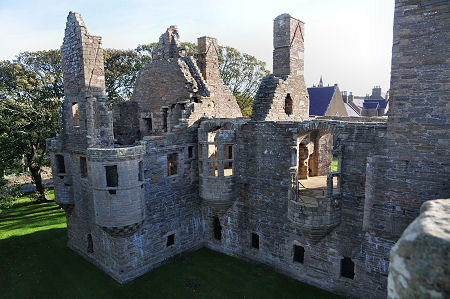 The West Front of the Earl's Palace in Shadow |
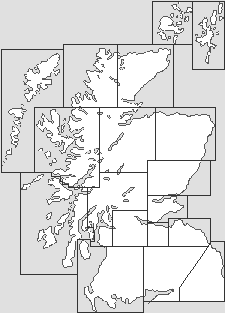
|
|
|
Visitor InformationView Location on Map4 Star Historic Attraction. Tel: 01856 871918. Post Code: KW15 1PD Grid Ref: HY 448 108 www.historicenvironment.scot HES: Palaces Web Page Opening Hours Admission Accessibility What3Words Location: ///jabs.snippets.jolly |
The Palaces In Fiction
|
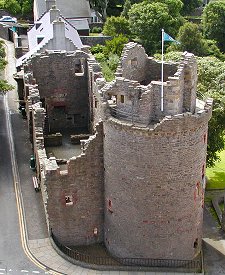 The Bishop's Palace from the Cathedral |
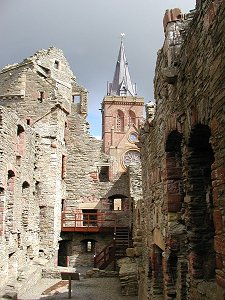 The Reverse View |
 The Palace from the Tower |
 The Tower from Below |
 East Side of Bishop's Palace |
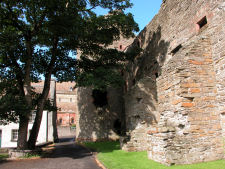 West Side of Bishop's Palace |
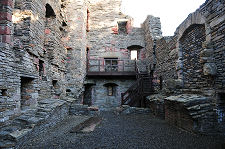 Interior, Looking North |
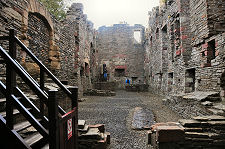 Interior, Looking South |
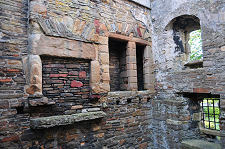 Old Fireplace |
 Bloody Orkney by Ken Lussey (29 June 2021).
Bloody Orkney by Ken Lussey (29 June 2021).